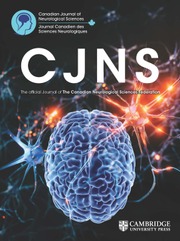No CrossRef data available.
Article contents
GP.06 Differential microglia and macrophage profiles in human IDH-mutant and -wildtype glioblastoma reveal therapeutic vulnerabilities
Published online by Cambridge University Press: 05 June 2019
Abstract
Background: Microglia and macrophages (MMs) are the largest component of the inflammatory infiltrate in glioblastoma (GBM). However, whether there are immunophenotypic differences in isocitrate dehydrogenase (IDH)-mutated and -wildtype GBMs is unknown. Studies on specimens of untreated IDH-mutant GBMs are rare given they comprise 10% of all GBMs and often receive treatment at lower grades that can drastically alter MM phenotypes. Methods: We obtained large samples of untreated IDH-mutant and -wildtype GBMs. Using immunofluorescence techniques with single-cell automated segmentation, and comparison between single-cell RNA-sequencing (scRNA-seq) databases of human GBM, we discerned dissimilarities between GBM-associated MMs (GAMMs). Results: There are significantly fewer but more pro-inflammatory GAMMs in IDH-mutant GBMs, suggesting this contributes to the better prognosis of these tumors. Our pro-inflammatory score which combines the expression of inflammatory markers (CD68/HLA-A, -B, -C/TNF/CD163/IL10/TGFB2), Iba1 intensity, and GAMM surface area also indicates more pro-inflammatory GAMMs are associated with longer overall survival independent of IDH status. scRNA-seq analysis demonstrates microglia in IDH-mutants are mainly pro-inflammatory, while anti-inflammatory macrophages that upregulate genes such as FCER1G and TYROBP predominate in IDH-wildtype GBM. Conclusions: Taken together, these observations are the first head-to-head comparison of GAMMs in treatment-naïve IDH-mutant versus -wildtype GBMs that highlight biological disparities that can be exploited for therapeutic purposes.
- Type
- Platform Presentations
- Information
- Copyright
- © The Canadian Journal of Neurological Sciences Inc. 2019


